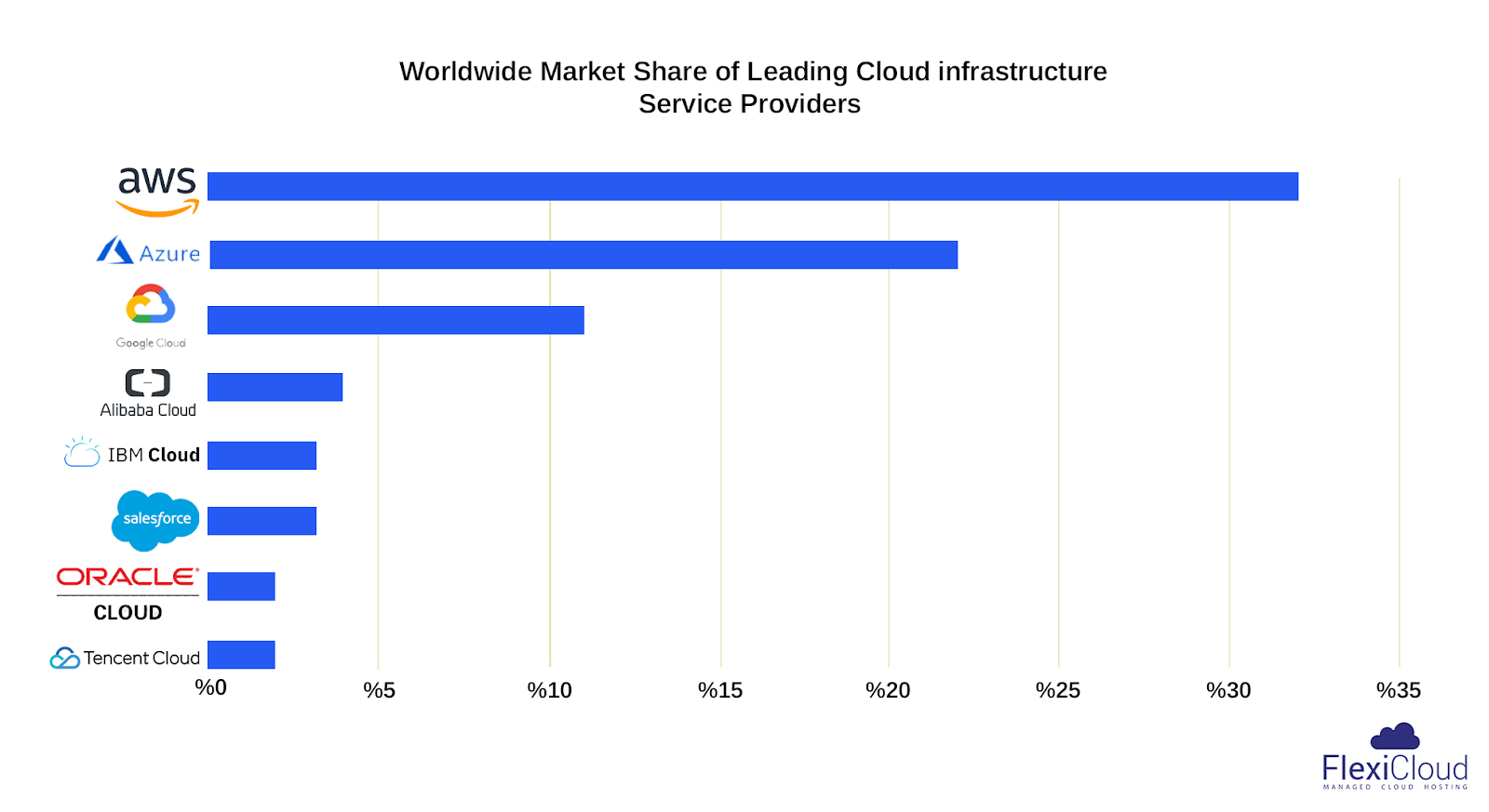Table of Contents
Introduction
Cloud computing has become indispensable for companies of all sizes in the modern digital environment. Amazon Web Services is one of the most well-liked and potent cloud computing systems out there (AWS). However, what really is AWS, and why is it used by so many businesses? Allow me to explain it simply.
What is AWS
Amazon offers a cloud computing platform called AWS, or Amazon Web Services. Consider it as a vast internet resource that provides a variety of services to assist businesses with their technological requirements. AWS provides a service for any purpose, be it content delivery, application execution, or data storage.
In 2002, Amazon began providing web services by utilizing the technology that they had initially developed for their online store. They grew by launching their well-knownIaaS services in 2006, and they were among the first to provide a pay-as-you-go cloud computing approach. With this arrangement, consumers can only pay for the storage and processing power that they actually require.
Today, AWS serves developers and organizations in 245 countries and territories with a broad range of tools and services. Governmental organizations, academic institutions, charitable organizations, and commercial businesses use it everywhere.
AWS offers three main types of services are:
- Infrastructure as a Service (IaaS): These are the fundamental components of cloud computing, including networking, storage, and virtual servers. As an alternative to purchasing and maintaining your own hardware, you can rent these resources from AWS.
- Platform as a Service (PaaS): Because of this platform, developers may create, test, and implement apps without being concerned about the underlying infrastructure.
- Software as a Service (SaaS):These are software programs that are ready to use and are hosted by AWS. You can use these programs online in place of setting up and maintaining software on your own servers.
AWS stands apart as the top cloud supplier since it offers a large number of administrations, has server farms from one side of the planet to the other, and is known for its dependability. It gives amazing assets and regular updates, assisting organizations with remaining proficient and developing. This goes with AWS, a famous decision contrasted with other cloud administrations.
Key Services Offered by AWS

AWS offers more than 200 completely included administrations spread across server farms worldwide. A portion of the key administrations include
- Compute: AWS gives virtual servers through its Flexible Process Cloud (EC2) administration. EC2 examples can be modified to fit explicit registering needs, permitting organizations to increase their assets or down in light of interest.
- Storage: Amazon Basic Capacity Administration (S3) is one of the most famous stockpiling arrangements given by AWS. It permits clients to store and recover any measure of information, making it ideal for reinforcement, chronicling, and fiasco recuperation.
- Databases: AWS offers managed database services like Amazon RDS (Relational Database Service) and Amazon DynamoDB. These services eliminate the need to manage and maintain the underlying database infrastructure, allowing developers to focus on their applications.
- Networking: Amazon Virtual Private Cloud (VPC) enables users to create isolated networks within the AWS cloud, ensuring security and control over network configurations.
- Analytics: AWS gives strong investigation devices, for example, Amazon Redshift, a completely overseen information stockroom administration, and Amazon EMR (Flexible MapReduce), a cloud large information stage.
- Machine Learning: AWS offers an assortment of AI administrations, including Amazon SageMaker, which permits engineers to construct, train, and convey AI models rapidly and effectively.
- Security: AWS offers a scope of safety highlights and consistency confirmations to guarantee information insurance, including AWS Personality and Access The board (IAM) and AWS Key Administration (KMS).
- DevOps: AWS works with consistent incorporation and nonstop conveyance (CI/Compact disc) through administrations like AWS CodePipeline, AWS CodeBuild, and AWS CodeDeploy, which assist with robotizing programming discharge processes.
Why Choose AWS
Today, AWS leads the world in cloud computing and is utilized by many types of businesses, including start-ups, major corporations, governmental bodies, and nonprofits. Here are a few things that make AWS unique.
- Scalability: You may simply scale your resources up or down with AWS in accordance with your demands. AWS is capable of managing the workload for both small and large-scale enterprise applications, including blogs.
- Reliability: AWS provides an extremely dependable infrastructure, with its data centers dispersed over the globe. This guarantees that, in the event of a problem at one data center, your apps and data will always be accessible.
- Cost-Effective:You only pay for the services you utilize when using AWS. This makes it an affordable option, particularly for companies that have tight budgetary constraints.
- Security: Strong security mechanisms, such as encryption, access control, and compliance certifications, are offered by AWS to safeguard your data. It is therefore a reliable platform for businesses handling sensitive data.
- Wide Range of Services: From fundamental computing and storage to sophisticated tools like big data analytics, AI, and ML, AWS provides hundreds of services. This implies that you can locate all the tools you need in one location for each project.
AWS Pricing Model
The AWS price structure is incredibly predictable and affordable. For instance, you only pay for the hour that you require a cloud server. Long-term agreements like five or ten years are not necessary. Furthermore, AWS provides a free tier with up to 58 items so that customers may familiarize themselves with the AWS platform and test out their services without any expense.
Benefits of Amazon Web Services
- Scalability: With AWS, you can effortlessly scale up or down your resources in accordance with your demands. This implies that you can swiftly expand capacity when demand is high or contract it when activity declines. It guarantees that your application always has the appropriate number of resources and helps you save money.
- Reliability and Security: AWS provides a dependable and secure infrastructure spread across numerous global data centers. Numerous of its services are backed by a 99.99% uptime guarantee, so you know that your data will be secure and your apps will remain up.
- Flexibility: You can use the technologies you’re most familiar with using AWS’s broad selection of supported operating systems, programming languages, databases, and architectures. Because of its adaptability, AWS can be easily integrated with your current workflows and systems, enabling a smooth cloud migration.
- Cost-Effective Pricing: Pay-as-you-go pricing for AWS ensures you only pay for the resources you really utilize. Long-term commitments or upfront fees are not necessary, and you may further save expenses by utilizing a variety of pricing choices like spot instances and reserved instances.
- Global Reach: With AWS, you can deploy your apps closer to your users thanks to its global network of data centers. This worldwide reach guarantees adherence to regional data laws, enhances performance, and lowers latency.
- Automatic Updates and Maintenance: WS takes care of the underlying infrastructure, including automatic updates, security patches, and routine maintenance. This means you can focus on developing and running your applications without worrying about managing servers or dealing with downtime.
- Wide Range of Tools and Services: AWS offers an extensive suite of tools and services, covering everything from computing power and storage to machine learning, analytics, and Internet of Things (IoT). This broad range of services allows you to build and deploy virtually any type of application, with the ability to easily add new features and capabilities as your needs evolve.
Drawbacks of Amazon Web Services
- Complicated Pricing Structure: AWS provides a large number of services with a variety of pricing structures, which can be confusing and intimidating. Costs can mount up rapidly without careful preparation, particularly if you’re using several services in several locations. Effective cost optimization and management need a lot of work.
- Learning Curve: AWS can have a high learning curve for new users because of its wide range of services and functionalities. It could be difficult for even seasoned users to keep up with the platform’s continual evolution. It takes time and appropriate training to effectively utilize AWS’s potential.
- Costs associated with data transfer: Although storing data on AWS might be rather cheap, moving data between AWS services, particularly across different regions, can be very expensive. These data transfer costs may be an unforeseen cost that accumulates over time.
- Vendor Lock-In: Switching to a different cloud provider can be difficult, expensive, and time-consuming after you’ve developed your infrastructure on AWS. Relying too much on AWS-only services and APIs can make it more difficult and costly to transition off of AWS.
- Support Costs: While AWS provides a variety of support options, the more expensive premium support services can be. It may be difficult for smaller companies or lone developers to justify the expense of higher-tier assistance, which is frequently required for complicated problems or extensive deployments.
- Service Limits: AWS has default restrictions on resources, including the maximum quantity of volumes or instances that can be created. Although these limits can be raised upon request, companies who need large-scale installations or those with quickly expanding demands may find them problematic.
- Complex Configuration:Even while AWS provides a wealth of strong services, appropriately configuring them might be difficult. Performance problems, unanticipated expenses, and security concerns can result from misconfigurations. To design and administer AWS environments correctly, meticulous planning and knowledge are needed.
- Shared Responsibility Model:Amazon uses a shared responsibility approach in which users are in charge of their own cloud security while AWS maintains accountability for the cloud’s security. While AWS offers safe infrastructure, it is the responsibility of the users to make sure that their own data, apps, and configurations are secure. This can be difficult for individuals who are not familiar with best practices.
Conclusion
Online business operations have been completely transformed by Amazon, a powerful and flexiblecloud computing platform. With its wide range of services, affordability, and scalability, it is hardly surprising that millions of people around the globe depend on AWS. In today’s digital world, being able to use and navigate AWS can be highly advantageous for developers, business owners, and IT professionals. Why not give it a try and see what benefits it could offer your business?
TRENDING OFFER

